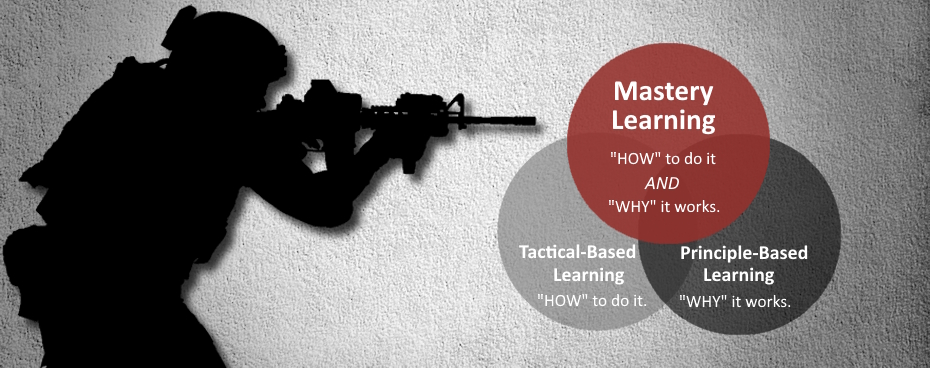Master Any Skill Faster: The Key to Effective Learning
Article by: AP @Tradecraft USA

Mastering skill performance involves more than just repetition—it requires a strategic approach to learning. The most effective way to excel in any discipline is by combining two key learning methods: tactical-based learning and principle-based learning. Each approach offers distinct advantages, but together, they create a powerful framework for skill mastery. This dual-stage approach is what enables top-tier performers to achieve the highest levels of proficiency in specific tasks while retaining the ability to quickly adapt to dynamic and unpredictable situations.
Tactical-Based Learning: Getting Good at Technique
Tactical-based learning is centered on executing specific techniques and actions tailored to particular situations. This approach emphasizes practical, hands-on experience and often involves repetitive practice and drills. It is particularly effective for learners who need to quickly and efficiently perform tasks in specific contexts.
Key Features of Tactical-Based Learning:
- Specific Techniques: Focuses on learning detailed, situation-specific actions.
- Immediate Action: Develops the ability to respond quickly and efficiently.
- Muscle Memory: Reinforces automatic performance through repetition.
This method is particularly beneficial in situations that demand precision and quick execution, such as military operations, sports, and technical applications. However, while it effectively develops specific competencies, it may not always foster adaptability in dynamic or rapidly evolving environments.
Tactical-Based Learning Example:
Learning "how" to build a campfire is a great example of tactical-based learning. Using tools like matches or a lighter, and materials like newspaper, leaves, dry twigs, and firewood, it's easy to learn the steps and physical process involved with getting a fire started. This approach offers a quick and efficient way to light a fire under certain conditions — it's dry, there's no wind, and you have dry wood and matches.
Principle-Based Learning: Understanding the Fundamentals
In contrast to tactical-based learning, principle-based learning focuses on understanding fundamental concepts that can be applied across different scenarios. Rather than emphasizing specific techniques, this method teaches the "why" and "what" behind actions, promoting flexibility and adaptability.
Key Features of Principle-Based Learning:
- Underlying Principles: Emphasizes the foundational concepts that guide decision-making.
- Flexibility: Enhances ability to adapt to varied and unpredictable circumstances.
- Critical Thinking: Develops problem-solving abilities rather than routine memorization.
With this method, progress may be less immediately measurable than in tactical-based learning, but the deeper comprehension enables more robust skill development and innovation. This method is particularly valuable in fields that require strategic thinking and problem-solving, though it usually requires more time before practical proficiency becomes evident.
Principle-Based Learning Example:
Imagine another scenario where you need to build a fire—only this time, it's an emergency, and you don't have matches or a lighter. This is where principle-based learning becomes essential. For example, knowing that fire requires three elements—heat, fuel, and oxygen (the fire triangle)—helps you understand why certain setups work better than others. If you're in the wilderness without any conventional fire-starting tools, you can apply these principles in various ways to select suitable fuel, ensure proper airflow, and generate enough heat for ignition and combustion. This foundational understanding enables you to better adapt, troubleshoot, and make smart decisions when conditions are unpredictable or resources are limited.
Combine the Two Methods for Skill Mastery
Most traditional learning environments emphasize tactical-based learning because it is easier to teach and produces quick results. However, true mastery comes from combining both approaches. Tactical-based learning focuses on "what to do" and "how to do it," helping individuals become highly skilled in specific tasks, while principle-based learning teaches "why it works," enabling them to solve problems and apply those skills flexibly and intelligently across a wide range of situations.
Whether in military operations, survival, sports, or any other domain, the key to effective learning and mastering performance lies in leveraging the strengths of both methods. By combining tactical precision with a deep understanding of fundamental principles, individuals can accelerate their learning, enhance their adaptability, and achieve true expertise in any skill they pursue.
**Note – If you would like to be notified when the next article is published, type "NOTIFY ME" in the subject line and email us at admin@tradecraftusa.com**




